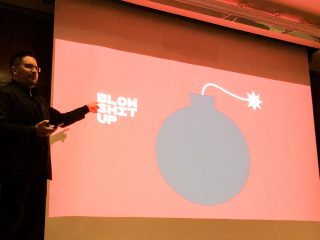With a title like that you would think I was about to start demolishing my grad school experience, and though it was not exactly ideal, it planted many seeds. To be fair, as with any degree program, graduate school cannot teach you everything. Since stepping into my first full-time position nearly 9.5 academic years ago I have gained yet another education. I refer to this new degree as my PhD in Academia. Thus far I have taken “courses” in Academic Politics, Academic Administration, Academic Accounting, and plenty more. These “courses” are not actual courses, but they have been lesson plans that I have had to learn from and adapt to, in some cases quicker or more abruptly than I would have preferred (crash courses).
Of all the “courses” I have taken, it has been the Academic Education and Practicum course that I have felt I have benefitted from the most. In both grad school and as an undergrad I deeply admired some of my professors and deeply hated others. Each end of the love/hate spectrum was enough to give me a foundation to mimic or avoid, but it was in what I call my Academic Education and Practicum course that I learned to become more than a carbon copy. I can look back on the exact moment that I started to come into my own. My very first semester.
In the fall of 2010 I was a young ambitious educator who was hell bent on creating the world’s greatest champions of design. Quite honestly not much of that has changed other than the “young” part. I was hired at a university that had a BA degree in Graphic Design but I was the first educator there to have an actual graduate degree in design. I was told this school would be a “stepping-stone” school and though it did turn out to be that, it was never my intentions for that to happen (major life events, along with other academic concerns effected this).
On day one I saw this design program as my legacy. I wanted to recreate my college experience, and education here. I worked tirelessly day and night, building and redeveloping curriculum, prepping lectures, and designing promotional materials for recruiting, all in my first semester. By the end of the first month I had devised a new bachelor of fine arts degree along with all of the many defenses that I would need to work through the academic process to make it happen. So needless to say I was committed.
Two months into my semester I began to realize that though I was committed, my students were not. At least not to the level I was at or expected of them. This realization hit me hard, extremely hard. From what I could tell, I did everything my professors had done. I knew they could do better, and so I knew I needed to be better. It was like halftime and we were down against an opponent.
It was that exact thought about halftime that enabled me to come into my own. I wrote a halftime speech, or as many of the student’s in that class called it “come to Jesus speech.” I delivered it to the class with as much passion as I could, in doing so, I did something that in my educational experience was new to me. The results were outstanding. Students not only created work that would win the university’s first awards in design but would even make it as far as the national level of the AAF Addy competition. I would later go on to research why this speech worked and it would become a major thread in my research as an academic. I’ve been using sports psychology methods in my teaching pedagogy ever since.
I still have many traits of my educational heritage. I still attempt to be as knowledgeable as Peter Jones, as perfect as Marie Bukowski, as energetic as Bob Berguson, and as strict and concise as Matthew Willemsen but I do all of that while also being Jacob Cotton.




